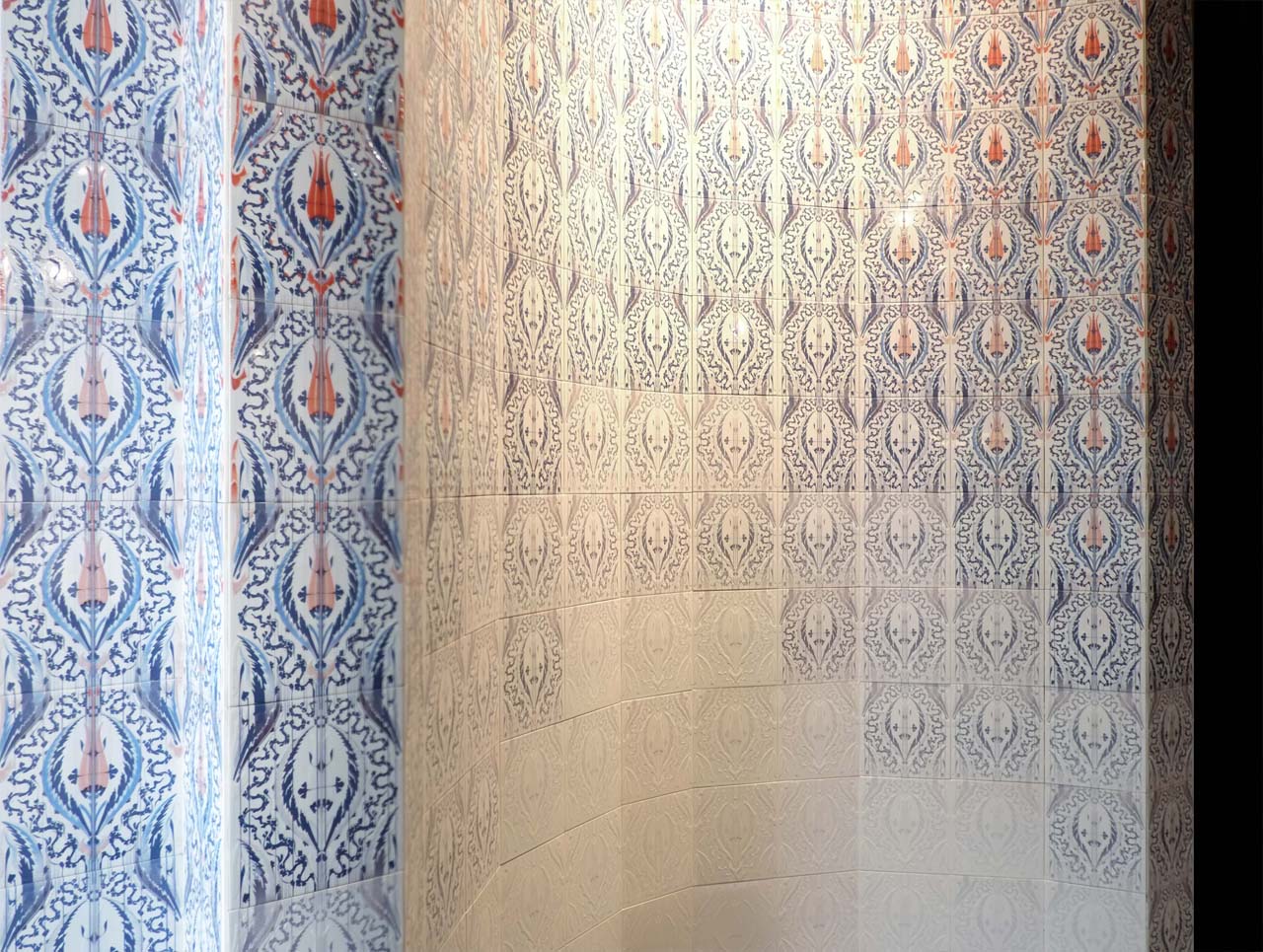garden
‘Garden’ is an installation, displaying a vision of how thermochromic tiles could be used to create an immersive scheme within Islamic worship architecture.
Commissioned by the Architects’ Journal and Turkish Ceramics, the research project explores the work of Ottoman architect Mimar Sinan, and more specifically his introduction of Iznik tiles into Islamic worship architecture. He enhanced the religious experience through the visual theatricality of his tile panels and it is this sensorial quality on which the research hinges.
The project focuses on the potential of thermochromic pigments in the creation of environmentally responsive tiles. Research into fabrication techniques focuses on whether changing temperature within the mosque can activate a visual transformation in ceramic tile panels.
Traditional Iznik imagery is dissected into layers of colour including blue, turquoise and red, which are engineered to appear at different increments in temperature. When the mosque is empty and at its lowest temperature, tiles are pure white – allowing the grandeur of the surrounding architecture to take the lead. As the space gradually fills with prayer goers and the temperature rises, tendrils of floral imagery begin to appear. They seem to grow up the wall as patterns in blue and turquoise subsequently emerge. The visitor’s eye is drawn upwards to meet the floral patterns in their full vibrancy at the top, as red is introduced and a full and dense body of imagery is revealed.




